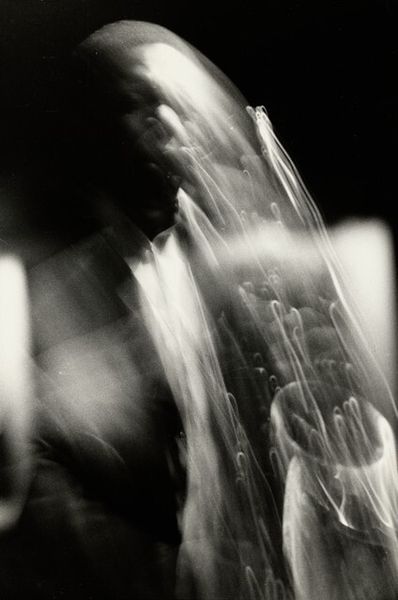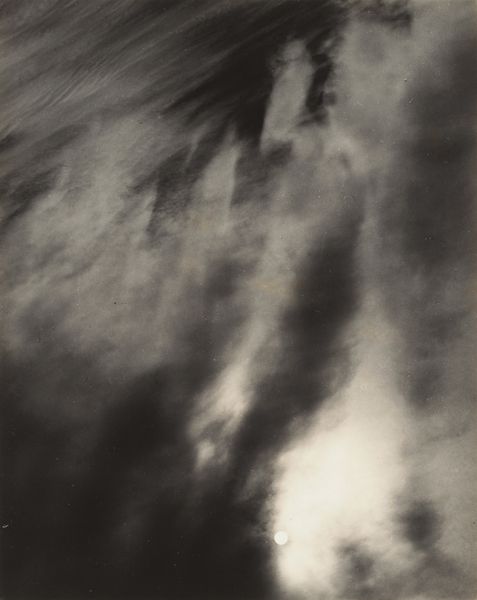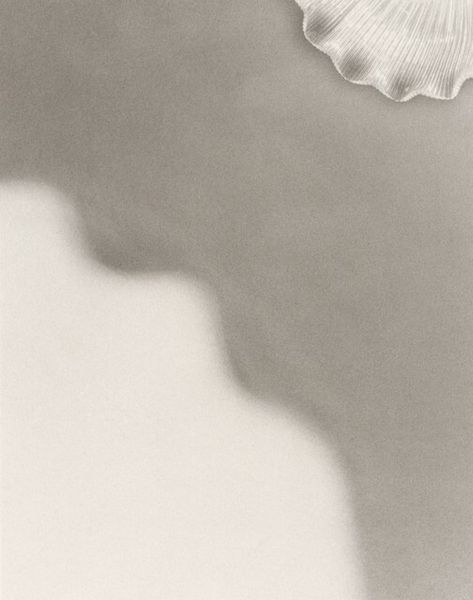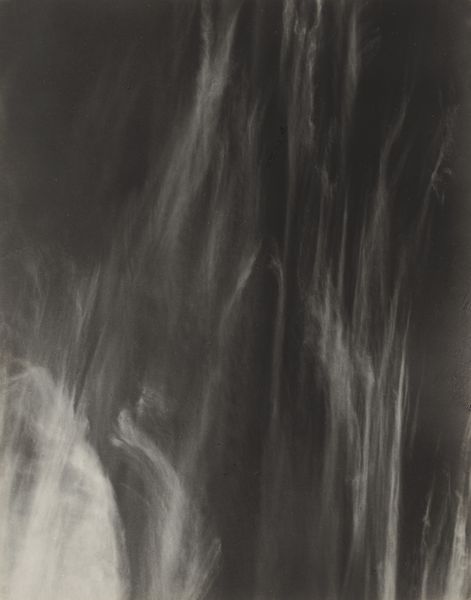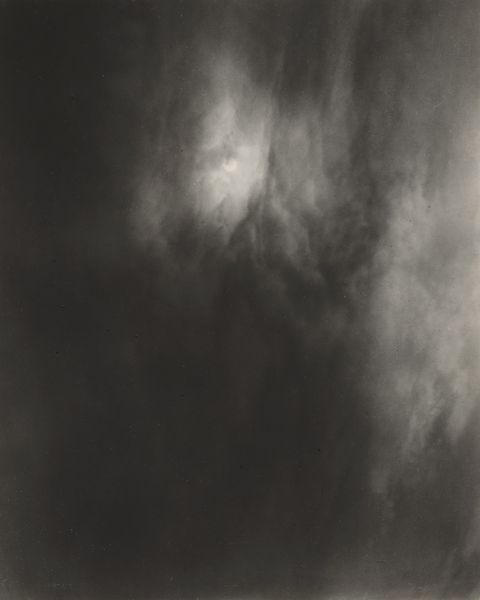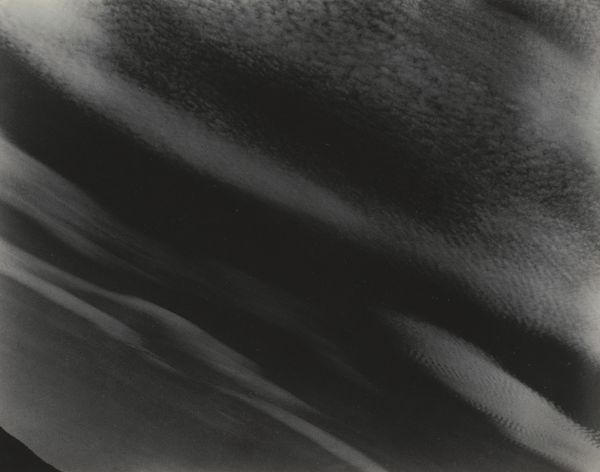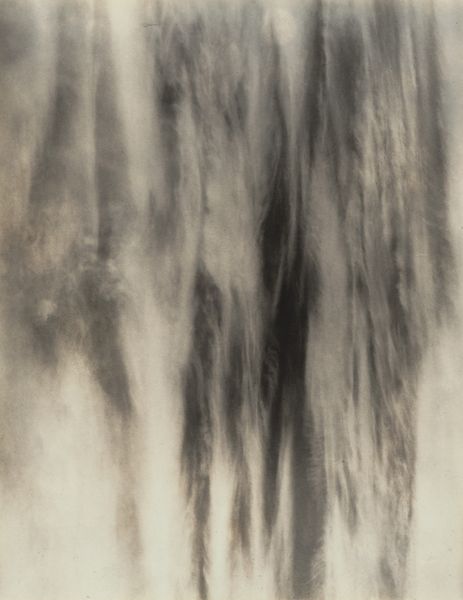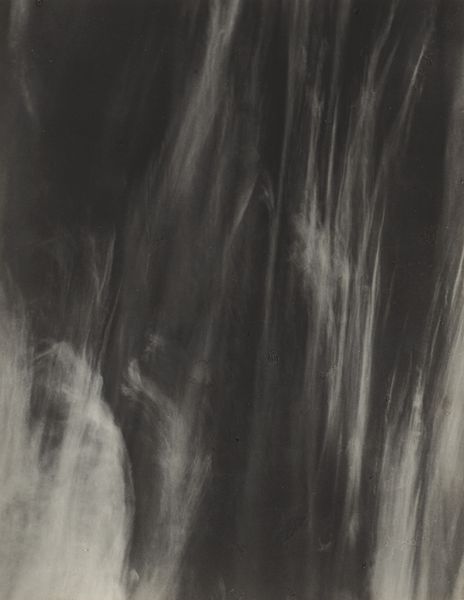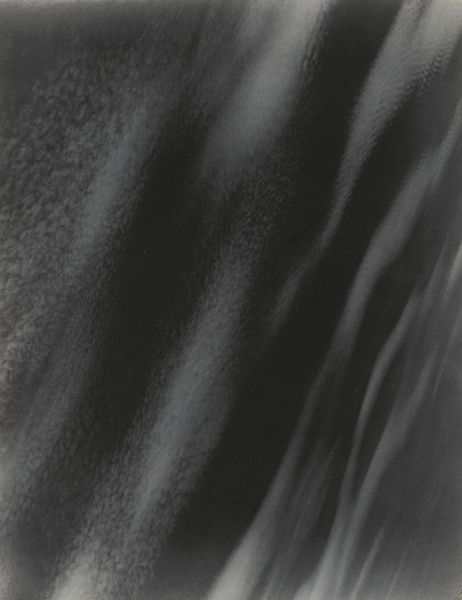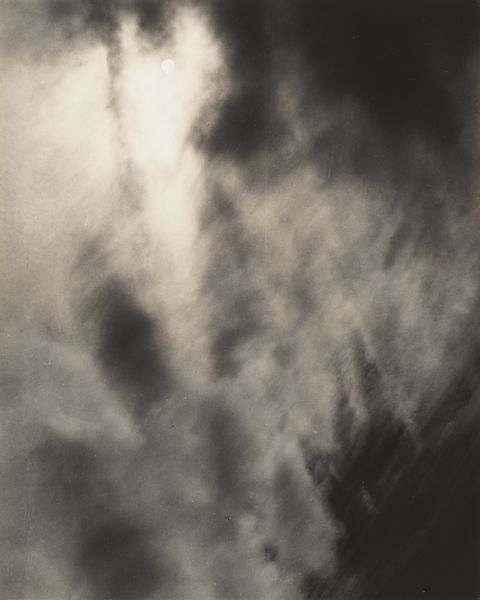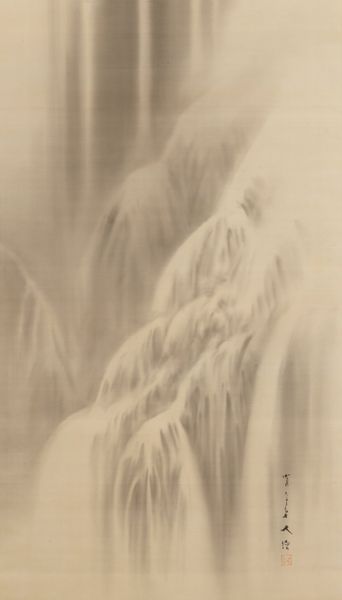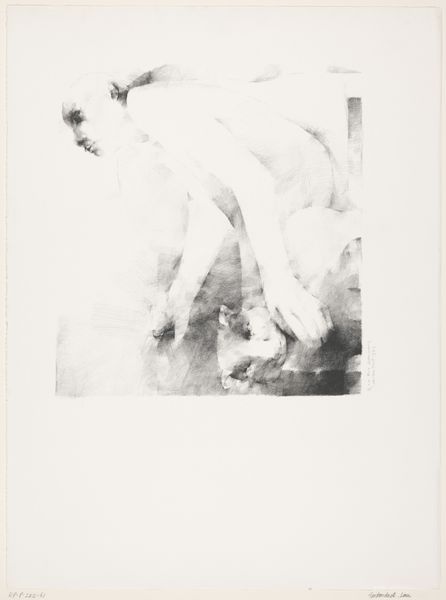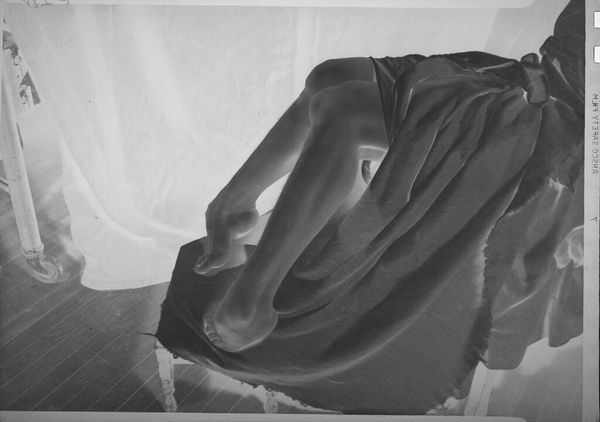
photography, gelatin-silver-print
#
black and white photography
#
black and white format
#
photography
#
body-art
#
black and white
#
gelatin-silver-print
#
monochrome photography
#
abstraction
#
monochrome
#
nude
#
monochrome
Dimensions: image (trimmed to sheet): 32.9 x 21.9 cm (12 15/16 x 8 5/8 in.) support: 46.8 x 36 cm (18 7/16 x 14 3/16 in.)
Copyright: National Gallery of Art: CC0 1.0
Curator: Here we have Frederick Sommer’s gelatin silver print, "Galleria Borghese," created in 1960. It strikes me immediately as an exploration of form. What's your first impression? Editor: Ethereal, almost ghostly. At first glance, the image is blurred and obscured, forcing you to look closer, to engage in some visual archeology. It feels very fragile. Curator: Sommer's choice of the gelatin silver process is fascinating. Each print, being unique, gains the allure of a handcrafted object. There is a clear divergence from purely mechanical image production, placing focus on individual skill, care and attention during each printing process, making it into something precious. It emphasizes human control over a mass producible media. Editor: Absolutely. This isn’t about documenting a scene, but transforming it. It's less about the subject – a nude, in this instance – and more about the play of light, texture, and tonality made evident by the material of the photograph. Look at how he utilizes the properties of the gelatin silver; the luminous, almost translucent quality suggests something otherworldly. Curator: Sommer's nudes aren't simply bodies, but studies in abstract form. Do you see them existing in conversation with sculptures of classical antiquity? It brings me back to Michelangelo's drawings... It hints at immortality somehow. Editor: That resonates. It also makes me wonder about the labor inherent in classical sculpture and the shift of labor in modern gelatin printing – something Sommer really draws on. Instead of sculpting stone over years, Sommer has an interplay of quick, manual craft that reveals or hides an essence immediately. He condenses artmaking into the photographic process itself, and this feels really groundbreaking. Curator: Perhaps it is also in capturing fleeting beauty, transforming this act into his art, making images into icons or shadows. In his works, reality almost feels… sculpted by time itself. It’s an art born from ephemerality. Editor: Exactly, and maybe that fragility, that transient quality is what moves me most. There's beauty here, sure, but there's also the silent reminder that none of this, not even art itself, is permanent. Curator: Yes. Art that embodies this type of paradox gives new and unexpected life to forms, isn't it? Editor: Precisely! And in doing so makes something else worth keeping, just like memory itself.
Comments
No comments
Be the first to comment and join the conversation on the ultimate creative platform.
